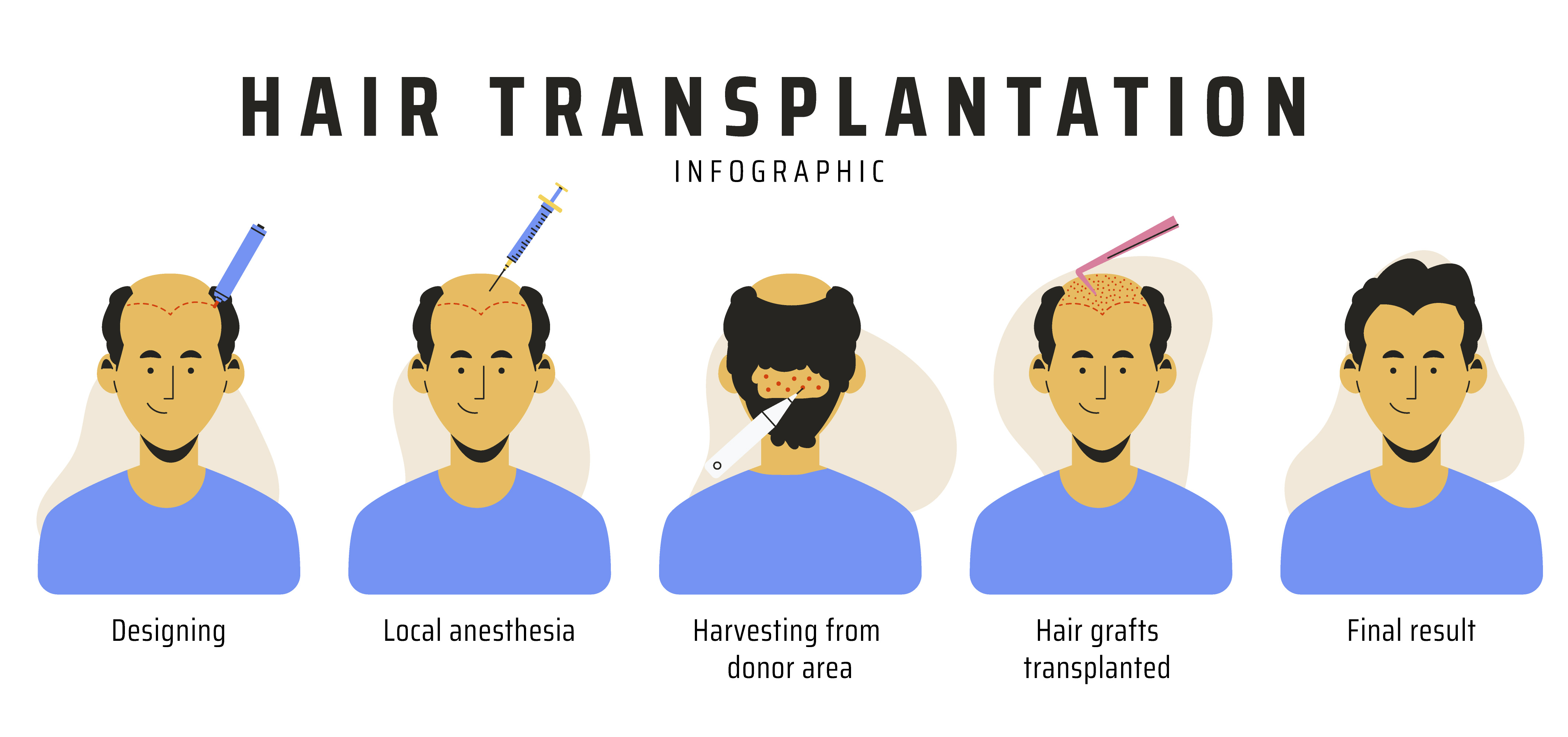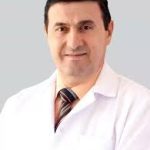
Understanding The Differences Between FUE And FUT Hair Transplants To Make The Best Choice For You
Hair transplants have been around since the late 1800s, though the purpose was different. At that time, surgeons performed hair transplants to combat the effects of medical conditions that caused hair loss, such as the disease known as favus. Hair transplants also aided in the restoration of hair for burn victims. The transplantation of tissue and follicles from a healthy portion of the scalp to the impacted areas proved successful. In the mid-twentieth century, a surgeon performed the first cosmetic hair transplant. Since then, new technology and techniques have changed this procedure dramatically.
Today, men and women who suffer from hair loss can undergo a hair transplant for medical or cosmetic reasons. These procedures are safe and effective. The ability to take a follicle from a healthy portion of the scalp and implant it into another area is a monumental medical advancement. Hair transplants can help patients with hair loss regain a thick and lush head of hair. Let’s explore the two techniques that are in use in modern times.
Follicular Unit Extraction (FUE)
When performing FUE, the surgeon will make small punches or “holes” in the patient’s scalp. Next, the surgical team begins removing follicles from the head, carefully extracting them to avoid damaging the follicles. The team will clean the patient’s scalp before moving on to the next step. Once the follicles are ready to transplant, the surgeon will make tiny incisions in the balding area of the scalp, again using the hole punch method. The team places the follicles in these incisions, ultimately leading to hair growth in this location over several months.
Advantages And Disadvantages Of FUE
- Advantages: FUE is the most widely used hair transplant technique today. This popularity is partly due to the small incisions and minimal scarring. Another advantage is that this procedure is significantly quicker than other surgical hair transplants. The benefits of a rapid recovery and an overall less invasive procedure make follicular unit extraction an attractive option for anyone experiencing hair loss.
- Disadvantages: The primary drawback of FUE is the smaller number of follicles extracted. This limitation prevents this technique from being as effective on a larger area of the patient’s scalp. Since the follicles removed with FUE have no protection, some can become damaged and may not produce growth. FUE may limit future extraction from the donor site due to the tiny punch scars this method produces.
Follicular Unit Transplantation (FUT)
At the beginning of the procedure, the surgeon will remove a strip of skin from the donor site. This location may be on the sides or back of the head, where hair is more resistant to falling out. Next, the team will ensure the scalp is cleaned and prepared for the transplant. They will then divide the strip of skin containing hair follicles into small grafts. The surgeon will place these grafts into incisions they have made in the scalp, targeting the area where the patient is experiencing hair loss. Hair will begin to grow from these grafts after three to four months.
Advantages And Disadvantages Of FUT
- Advantages: FUT is a valuable technique for patients with large areas of hair loss. The many follicles the surgeon can implant from the donor site provide an excellent basis for future hair growth. This method can produce an average of 1,000 grafts more than others. Follicular unit transplantation does not require that the patient shave their head before the procedure. Existing hair will usually cover the wound left from the strip of extracted skin at the donor site.
- Disadvantages: The average recovery time from FUT is ten to fourteen days, though some patients may have a longer healing period. Patients of FUT may experience linear scarring after the procedure, though the surrounding hair usually covers the scar. In rare cases, patients may require an additional hair transplant to hide this scar. Follicular unit transplantation can also cause the scalp to be itchy and tight. If the scalp is tight, this lack of excess skin can prevent patients from having a future FUT should a follow-up procedure be necessary for more hair growth.
What Should You Avoid After A Hair Transplant?
Many activities and products can interfere with your recovery and results after a hair transplant. We’ll cover a few of the crucial ones here. If you choose to have a hair transplant in Raleigh, Dr. Sumeet Jindal is extremely skilled and highly experienced in hair restoration. He will supply you with a thorough list of things you should and shouldn’t do during your recovery. Following these instructions will help you have a successful hair transplant by Dr. Jindal.
- Refrain From Exercising: Too much exertion causes your blood pressure and heart rate to rise. This elevation can lead to more bruising and swelling after surgery. Using energy to exercise when your body needs it for healing can also slow your recovery. Wait at least a week or two before resuming physical activity.
- Don’t Smoke Or Vape: Both vaping and smoking affect the body’s oxygen supply, which can delay your healing. Good circulation is necessary to see positive results from your surgery. Smoking or vaping can diminish your body’s hair regeneration ability.
- Avoid Pressure On Your Scalp: Don’t touch or scratch your scalp for several days post-operation. Putting pressure on your scalp can irritate the transplant area and damage hair follicles. Touching your scalp may transfer bacteria to the incisions that could cause infection.
- Don’t Use Ice Packs Or Heat: Extreme temperatures are not optimal for hair growth. Ice and heat can damage the outcome of your hair transplant. If post-surgery swelling is an issue, you should consult your surgeon. You may be able to apply a cold, sanitary compress to your scalp.
- Stop Alcohol And Caffeine Intake: Your surgeon will likely have advised you to refrain from drinking alcohol and possibly caffeine before your hair transplant. Consumption of these products can interfere with your blood flow and lessen the results of your surgery. Don’t drink caffeinated or alcoholic drinks for five to seven days after your procedure.
- Avoid Direct Sunlight: Don’t go into direct sunlight for extended periods for the first few weeks after surgery. The results of your transplant may suffer if your scalp gets sunburned from too much time outdoors. You can wear a hat after day three of your post-op recovery to protect your head from the sun.
Frequently Asked Questions
When Can I Wash My Hair After A Hair Transplant?
After a hair transplant Raleigh, you should wait at least three to seven days before washing your hair. Follow your surgeon’s instructions for a more precise timeline for washing your hair. When you reach the point of being able to clean your newly transplanted hair, you should start by gently massaging your scalp. After applying a mild, pH-balanced shampoo, you can clean your scalp, carefully washing the areas near the donor and transplant sites. Don’t apply too much pressure to any area of your scalp. Using only warm water–not hot–rinse your head thoroughly. You should refrain from using a blow dryer on your hair, allowing it to air dry instead. These steps will help you see better results from your hair transplant.
Is Hair Grown Through A Hair Transplant Permanent?
A hair transplant is a permanent procedure. It is possible–and usual–to lose some hair around three months post-operation. You should also begin to notice new growth at this time. This hair is permanent, and you can treat it like the rest of your hair. You can color your transplanted hair, cut it, and style it any way you want.
Will Hair Grow Back At The Donor Site After A Hair Transplant?
Follicles produce hair growth. After the surgeon extracts a follicle, the donor site this follicle comes from will no longer produce hair. However, surgeons strategically remove follicles at various points, usually at the back and sides of the patient’s head. The hair is thickest in these areas and more resistant to hair loss. This technique ensures plentiful hair surrounds the section of the scalp where the surgeon harvested the follicles.
What Are Non-Surgical Hair Restoration Options?
A popular alternative to a surgical hair transplant is known as PRP. Platelet-rich plasma treatments are a series of injections into the scalp that promote hair growth in areas where restoration is necessary. The patient will have their blood drawn at the beginning of their session. Once they have spun the blood in a centrifuge to separate the plasma, the provider will inject it into the patient’s scalp. This substance stimulates the production of new cells, which helps generate growth.
Non-surgical hair restoration can be a good option for younger patients. A surgical hair restoration is not as beneficial for patients who don’t have an established hair loss pattern. This pattern usually becomes evident in slightly older patients. If a younger patient undergoes a hair transplant, they may lose hair in additional places, requiring another surgery.
Conclusion
The invention of the hair transplant has helped many people achieve a full and healthy head of hair. Advancements in medical technology have provided us with two techniques of hair transplantation: FUE and FUT. Each method has advantages and disadvantages; however, both are viable options for patients seeking a restored and youthful look.









